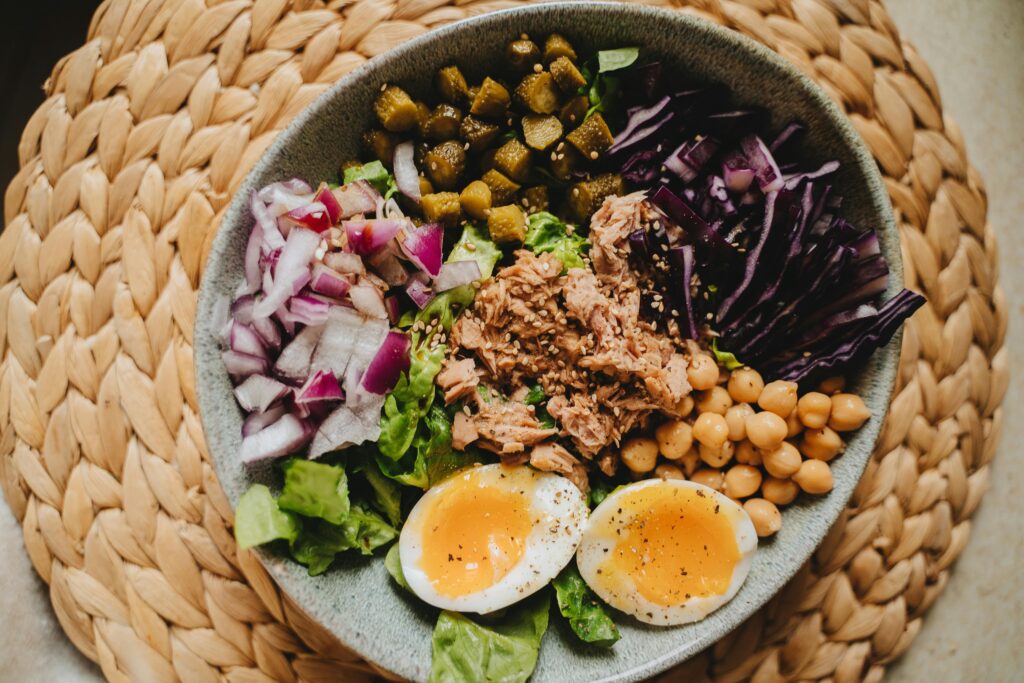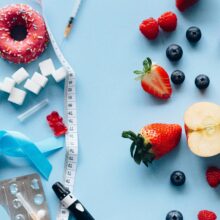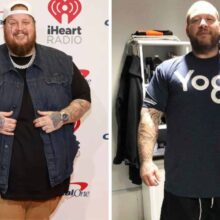
High Protein Diet for Weight Loss Effective Strategies and Benefits Explained

Vacation Rentals: Vacation RentalsBook your vacation rentals here and save 8% with a coupon: PROMO! These luxurious rentals, nestled in the finest resort areas, offer complete furnishing and essential amenities to enhance your stay. Bid farewell to endless emails and phone calls - secure your dream vacation rental now using the convenient search box above.

If you want to lose weight effectively, a high-protein diet can be a practical tool. A high-protein diet helps with weight loss by making you feel fuller, boosting your metabolism, and preserving lean muscle mass. These benefits work together to reduce appetite and increase the calories your body burns at rest.
Eating more protein often means cutting back on carbohydrates and fats, which can help control cravings and support steady weight loss. The key is to choose quality protein sources like lean meats, fish, eggs, and plant-based options to get the most benefit.
Understanding how much protein you need and incorporating it properly into your meals can enhance your results and support overall health. This approach is especially helpful if you want to keep muscle while shedding fat.
Benefits of a High Protein Diet for Weight Loss
A high-protein diet offers specific advantages that can make weight loss more effective. It helps control hunger, increases the calories your body burns, and protects your muscle mass while you are in a calorie deficit.
Increased Satiety and Reduced Appetite
Protein affects hormones that regulate hunger and fullness. By boosting levels of satiety hormones and lowering hunger-stimulating hormones, protein helps you feel full longer.
This means you’re less likely to snack between meals or overeat, supporting a lower calorie intake overall. Foods high in protein, such as lean meats, dairy, and legumes, are especially effective in promoting this feeling of fullness.
Incorporating protein-rich foods in your meals can reduce cravings and help control your appetite naturally, making it easier to stick to your weight loss plan without feeling deprived.
Rdeprived.Read more: 10 Science-Backed Reasons to Eat More Protein
Thermogenic Effect of Protein
Protein requires more energy to digest compared to fats or carbohydrates. This is known as the thermic effect of food (TEF).
When you consume protein, about 20-30% of its calories are used just to process and absorb it. In contrast, carbs and fats have a TEF of 5-10% and 0-3%, respectively.
This higher energy expenditure can slightly increase your metabolism. Over time, this contributes to greater calorie burn, supporting fat loss when combined with a calorie deficit.
Muscle Preservation During Calorie Deficit
When you eat fewer calories, your body risks breaking down muscle for energy. Protein intake supports maintenance of lean muscle mass during weight loss.
Adequate protein helps repair and rebuild muscle tissue even as you lose fat. Preserving muscle is important because muscle burns more calories at rest than fat, helping to maintain your metabolic rate.
Eating enough protein protects your strength, supports exercise performance, and helps prevent the slowdown of metabolism that often accompanies dieting. This makes sustained weight loss easier.
How to Structure a High Protein Diet
To build an effective high-protein diet for weight loss, you need a clear approach to daily protein targets, quality protein choices, and the right balance of other nutrients. This sets the foundation for preserving muscle, reducing hunger, and supporting metabolism.
Recommended Daily Protein Intake
Your protein needs depend on factors like age, activity level, and weight loss goals. For weight loss, aim for about 1.2 to 2.0 grams of protein per kilogram of body weight daily.
If you weigh 70 kg (154 lbs), this means consuming between 84 to 140 grams of protein per day.
Higher protein intake helps preserve muscle during calorie restriction and increases satiety. Spread your protein intake evenly across meals, aiming for roughly 20-35 grams per meal to maximize muscle protein synthesis.
Adjust this range based on your activity level—those who exercise regularly or do strength training should target the higher end.
Choosing High-Quality Protein Sources
Focus on proteins that provide all essential amino acids. Animal-based options such as lean meat, poultry, fish, eggs, and dairy are complete proteins.
Plant-based proteins can be combined to cover all amino acids. Include sources like lentils, chickpeas, quinoa, tofu, and nuts.
Prioritize lean cuts and low-fat dairy to manage calorie intake. Protein powders like whey or plant-based isolates can supplement your diet, especially post-workout.
Including a variety of protein sources boosts nutrient diversity and keeps meals interesting, supporting long-term adherence.
Balancing Macronutrients for Weight Loss
Alongside protein, moderate your intake of carbohydrates and fats to create a calorie deficit.
Aim for a balanced plate with:
- 40-50% of calories from protein
- 30-35% from healthy fats like olive oil, avocado, and nuts
- 15-30% from carbohydrates, focusing on fiber-rich vegetables and whole grains
Limits on refined carbs help control insulin response and hunger. Healthy fats support hormone function and absorption of fat-soluble vitamins.
Adjust macronutrient ratios based on how your body responds, keeping protein as the priority for fat loss and muscle preservation.
Best Protein Sources for Weight Loss
Choosing the right protein sources can help you maintain muscle while losing fat and keep you feeling full longer. Both animal and plant proteins offer valuable nutrients, and supplements can provide added convenience when needed.
Animal-Based Protein Options
Animal proteins are complete, meaning they contain all essential amino acids your body needs. Lean meats like chicken breast, turkey, and lean cuts of beef or pork provide high-quality protein with minimal fat.
Fish and seafood are excellent choices, rich in protein and often low in calories. Eggs offer a versatile and affordable option with a strong protein profile. Low-fat dairy products like Greek yogurt and cottage cheese combine protein with calcium, which may support fat loss.
Including these options can help you meet your protein goals efficiently while controlling calorie intake. Pay attention to preparation methods—grilling or baking usually retain protein content without adding excess fat.
Plant-Based Protein Foods
Plant proteins often require combining foods to get a complete amino acid profile. Legumes such as beans, lentils, and chickpeas are rich in protein and fiber, which aids satiety. Soy products like tofu, tempeh, and edamame are among the few plant sources with complete protein.
Nuts and seeds provide protein along with healthy fats but should be consumed in moderation due to their calorie density. Some grains like quinoa and teff offer more protein than typical cereals.
These foods support weight loss by providing steady energy and helping regulate blood sugar. You can mix and match these sources to fit your diet preferences and ensure a balanced intake.
Protein Supplements and Powders
Protein supplements are a convenient option when whole foods aren’t available or when you need more protein to meet your goals. Whey protein is popular for its fast absorption and complete amino acid profile.
Plant-based powders, such as pea, rice, or hemp protein, are suitable if you avoid dairy or follow a vegan diet. These often blend multiple sources to improve amino acid balance.
Use supplements to complement, not replace, whole foods. They help boost your intake around workouts or busy days but don’t provide the fiber or other nutrients found in solid foods.
Also read: Top 7 Weight Loss Strategies and Maximum Fat Loss
Meal Planning and Sample Menus
To follow a high-protein diet for weight loss, focus on meals that supply a consistent protein intake throughout the day. Balance your meals with lean proteins, vegetables, and moderate healthy fats. Planning meals ahead helps maintain your protein goals and prevents reliance on less nutritious options.
High Protein Breakfast Ideas
Start your day with protein-rich breakfasts that keep you full longer. Options include scrambled eggs or an omelet with spinach and tomatoes. Greek yogurt topped with nuts and berries is also quick and high in protein.
Consider protein smoothies made with whey or plant-based protein powder, almond milk, and a tablespoon of peanut butter for added fats and flavor. Aim for around 20-30 grams of protein at breakfast to jump-start metabolism and reduce mid-morning hunger.
Lunch and Dinner Recipes
For lunch and dinner, select lean meats like chicken breast, turkey, or fish. Grilled salmon with steamed broccoli and quinoa offers protein with fiber and healthy carbs. You can also prepare turkey chili or lean beef stir-fry with mixed vegetables.
Plant-based options such as lentil and chickpea salads are effective for protein intake. Use herbs and spices instead of heavy sauces to keep calories low. Target 30-40 grams of protein per meal to support muscle preservation and fat loss.
Smart Snacking Strategies
Choose snacks that provide protein without excessive calories. Options like a handful of almonds, cottage cheese, or beef jerky work well. Hard-boiled eggs and edamame also serve as portable and convenient protein sources.
Avoid high-sugar snacks that can spike insulin and cause hunger soon after. Incorporate snacks with 10-15 grams of protein to keep your energy steady between meals and avoid overeating at your next meal.
Potential Risks and Considerations
A high-protein diet can impact your body in several ways, especially when followed for an extended period. Understanding potential side effects, who should seek medical advice, and the challenges of long-term sustainability helps you make informed decisions.
Possible Side Effects
You might experience side effects such as kidney strain, especially if you have pre-existing conditions. High protein intake increases the workload on your kidneys, which can be problematic over time.
Digestive issues like constipation or diarrhea are common due to low fiber intake when carbohydrates are reduced. You could also encounter nutrient imbalances if the diet lacks variety.
Another risk involves weight gain if protein sources are high in unhealthy fats or excess calories. Monitoring your overall nutrient intake and hydration helps minimize these side effects.
Who Should Consult a Healthcare Provider
If you have kidney disease, diabetes, or heart-related conditions, consulting a healthcare provider before starting a high-protein diet is crucial. These conditions can worsen with high protein consumption.
Pregnant or breastfeeding women and individuals with certain metabolic disorders should also seek medical advice. A healthcare provider can help tailor the diet to your specific health needs and monitor potential complications.
Professional guidance is important for adjusting your diet safely, ensuring you avoid nutritional deficiencies or other health risks.
Long-Term Sustainability
Sustaining a high-protein diet over the long term may pose challenges. You might find it difficult to maintain variety and balance, which can lead to boredom or nutrient gaps.
Over time, restricting carbohydrates can affect energy levels and overall well-being. Planning meals to include a range of protein sources and adequate vegetables is key.
You should regularly assess how the diet impacts your health markers and adjust as needed to support lasting, safe weight loss.
High Protein Diet: Low Calories



